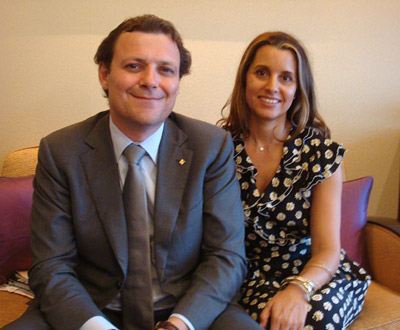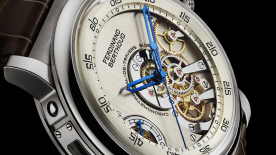WORLDTEMPUS - 11 January 2011
Elizabeth Doerr
At the official launch of the IWC Sidérale Scafusia in September in Schaffhausen, professor of astrophysics Ben Moore made an interesting statement about the mechanical watch, “It is in essence forces being transmitted through cogs and springs that make a watch – but this is done here in a very beautiful way.” Moore's comment was apt, and IWC had the pleasure of introducing the most complicated watch of its entire existence thus far: a constant force tourbillon with perpetual calendar and sidereal time.
This was largely due to the talent and diligence of Jean-François Mojon, IWC's former head of movements and now an independent contractor. Though he works behind the scenes, the rapidly growing reputation of Mojon's company Chronode has been established by the fantastic work he has been completing for various brands – though he has probably at least also in part profited from the sudden shortage of suppliers of complicated movements and modules. Mojon's business is expanding almost faster than he can keep up with; perhaps Corum's takeover of Les Artisans Horloger in the spring and Louis Vuitton's appropriation of La Fabrique du Temps in the fall – and even Hublot's 2010 incorporation of BNB – also had something to do with this.
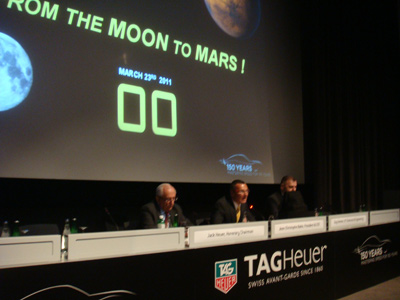
Movement shortage?
This subject remains fascinating, and the Swatch Group is feeding the fire with further developments of its announcement to curb supplies to other manufacturers. Certainly, mainsprings and hairsprings were always in relatively short supply, but now they are almost becoming a bottlenecked point – particularly when we take into consideration that almost all major watch brands are currently experiencing record-breaking turnover numbers – including and particularly the Swatch Group as a January release confirmed – despite the recent recession. Many experts attribute these numbers to distribution exploration of the Far East – and China in particular – as an emerging market for luxury goods, partly thanks to the recession in the West.
In June, the Swiss Competition Commission opened an investigation that would allow the Swatch Group to reduce supplies of movements and components to third parties. The commission passed an interim ruling for a 2012 reduction of mechanical ETA movements to 85 percent of 2010 levels (when the recession was still full-on) and of Nivarox components to 95 percent. The speed of the decision's results is naturally a real topic in the industry and will increase costs for watchmakers and likely compound pricing problems for an industry already lamenting the strong Swiss franc. A small group of companies filed an appeal with the Swiss Federal Administrative Court seeking to freeze the measures.
“The decision of the Comco came as a bombshell in the Swiss watchmaking industry” said Peter Stas, co-founder and CEO of the Frédérique Constant group.
Naturally, these events open the door for new specialist movement makers like MHO, masterminded by Martin Braun. In 2010, Braun introduced hand-wound Caliber 136, an annual calendar movement with silicon components in the escapement. He did this at the same time he presented the Antoine Martin perpetual calendar to the consumer (he is cleverly separating the two “marques”: one a classic watch brand and the other a movement supplier). The coming year will see the introduction of a high-quality automatic caliber with a number of very interesting attributes.
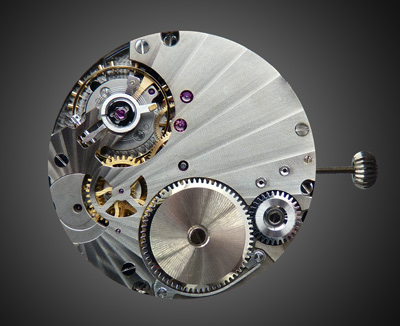
Trends
Early on in the year – at SIHH to be exact – it became apparent that luxury watchmaking was back to strength. Due to this, large and very complicated timepieces were once again introduced, but they were learning to peacefully coexist with “classic” styles in the high-end market. By the end of the year, it was apparent that once again anything goes – from classically thin watches to murderously complicated and large timepieces and everything in between. What is no longer necessarily en vogue is “ice” or “bling.”
Another perhaps not-so-new trend, but one that has been strengthened, is the local watch fair aimed at interesting end consumers and engaging them in direct dialogue. With use of social media still on the rise, direct access to consumers is fast becoming the “norm” in the watch industry. Fairs like Munichtme, Viennatime, SalonQP, Timecrafters, and Belles Montres have become must-visit venues for every level of connoisseur.

Passing of the guard
Several prominent 2011 deaths of men that have coined the face of modern watchmaking signalize a passing of the guard. The passing of Gabriel Tortella in Switzerland and Michael Balfour in England represent a handing off of the journalistic baton to a younger generation.
Industry greats such as Ulysse Nardin's Rolf Schnyder, co-axial escapement inventor Dr. George Daniels and iconic designer Gérald Genta also took their leave of this world in 2011. Younger watchmakers and industry leaders will fill their shoes, hopefully continuing to remember their deeds in the service of mechanical watchmaking. Jean-Claude Biver has also passed the baton as nominal head of Hublot to his dedicated colleague Ricardo Guadalupe by taking a step back.
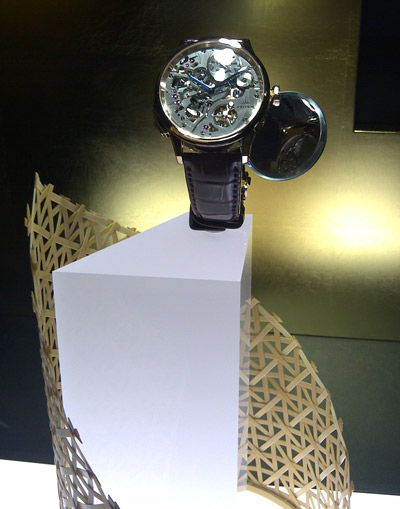
It's a small world after all
China, naturally, has become ever more of a topic and likely remains the most-targeted market in the luxury watch industry. The advent of Swiss magazines published in Chinese this year also display publishers' understanding that a large number of tourists to the Helvetian country are Asian nationals.
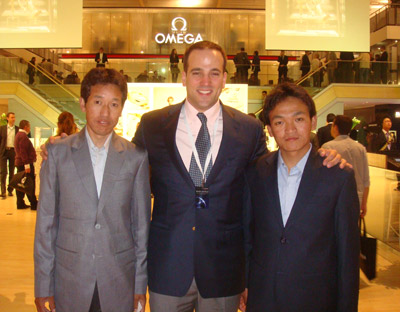
Watchmaking also continues to thrive in other parts of the world. In the U.S., RGM continues down its handcrafted path and made a first appearance at the Geneva Time Exhibition in 2011 with the first serially made American tourbillon. American company Kobold opened a subsidiary in Kathmandu in 2011. Two Nepalese citizens are currently training to become watchmaker repairers at Kobold's Pittsburgh facility with the goal of running the show at the foot of Mt. Everest.
The United Kingdom is also flourishing and continues to produce ever more timepieces and brands – which was in high evidence at SalonQP. Bremont even manufactured an entire marine clock in England this year – with all manufacture and assembly completed in the British Isles.

Germany's Glashütte continues down its growth path as well. In addition to the established companies there, Tutima opened its new factory to the public and announced it will be entirely moving operations back to the city of its birth. To celebrate this, the brand known for its pilot's watches also introduced the first full minute repeater for the wrist made on German soil. Something not yet widely publicized is a new brand with an ultra-historical name quietly infiltrating the Saxon town: Moritz Grossmann. Its new factory, located just behind Nomos and Tutima, is rapidly taking form and is tremendously large. Moritz Grossmann's first wristwatch, Benu, was limited to just 100 pieces. It will be interesting to see what emerges from this new building next.
2012 can only continue to bring fresh perspectives and mechanical surprises. Let the new year begin!
